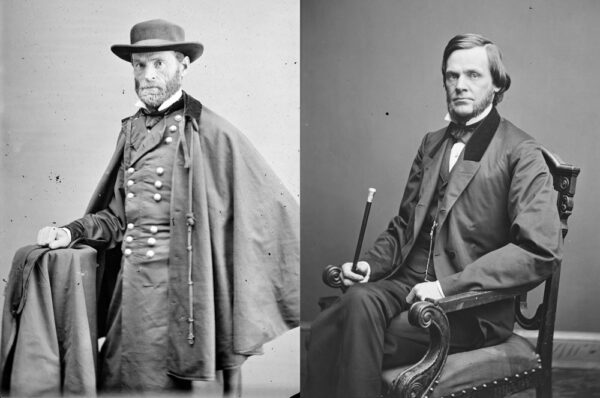In describing the weapons Confederate soldiers carried, historian Bell Wiley noted, “Almost as indispensable as a rifle, in the eyes of the men who rushed to the colors in 1861, was a pistol of some sort.” That early war enthusiasm for pistols also influenced Union troops. As one Massachusetts soldier noted, “[T]he newly fledged soldier who did not possess a revolver … was something of a curiosity.” As these men gained battlefield experience, they became, Wiley observed, “convince[d] … that a rifle was the only kind of gun … [they] needed.” That change in attitude, coupled with an increasing number of regimental officers who forbade their troops to have pistols, meant that after 1862 such weapons were carried mainly by officers and cavalrymen. The ones shown here hint at their great variety over the Civil War years.
Colt Model 1860 Army Revolver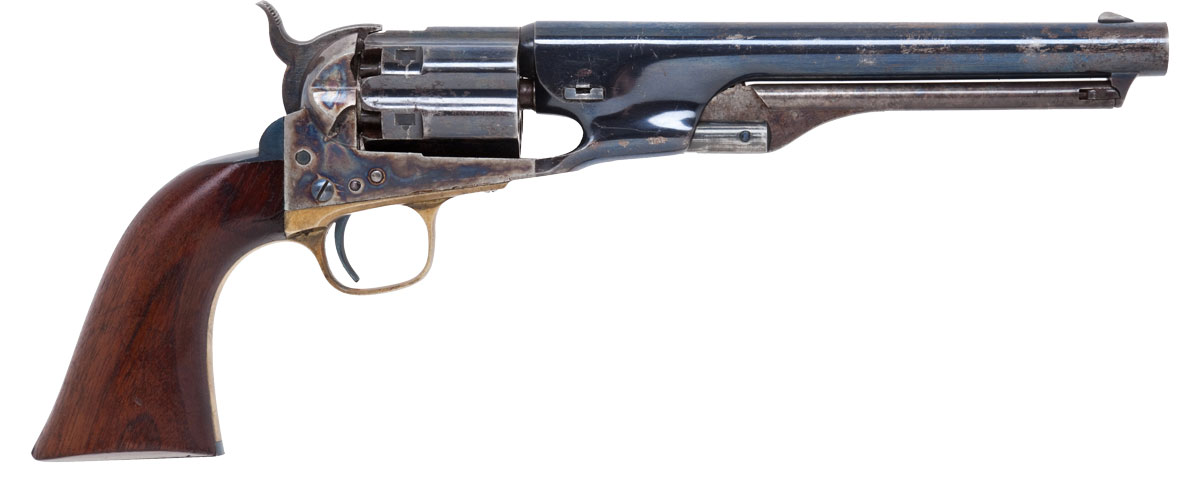 Heritage Auctions
Heritage Auctions
Colt Model 1860 Army Revolver
Caliber: .44
Operation: Single-action, six-shot
Length: 14 inches
Weight: 2 lb 11 oz
The reliably effective Colt Model 1860 Army revolver was the most widely carried handgun during the Civil War. It used paper cartridges—made from a load of black powder and a ball wrapped together in flammable nitrated paper—that were loaded into the front of the chambers and seated with a loading lever ram. A percussion cap, placed on a nipple at the back end of the chamber, ignited the charge when struck by the hammer. The Colt Model 1860 Army—along with its sibling, the similarly popular .36-caliber Model 1861 Navy—were nearly 40% of the revolvers acquired by the U.S. government for use during the war, a sizable number of which eventually found their way into Confederate hands through capture.
Butterfield Army Revolver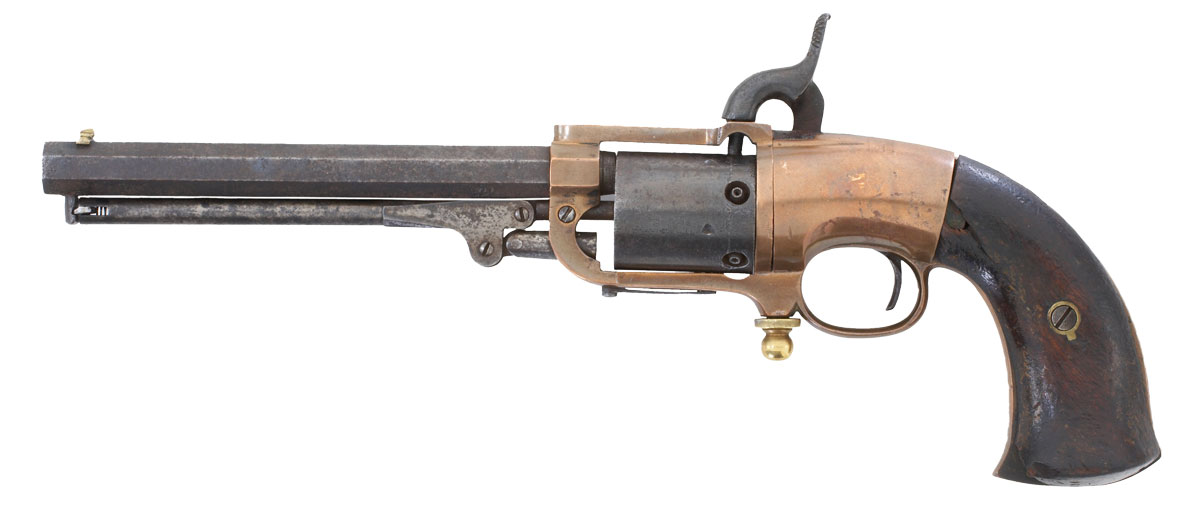 Heritage Auctions
Heritage Auctions
Butterfield Army Revolver
Caliber: .41
Operation: Single-action, five-shot
Length: 13 3/4 inches
Weight: 2 lb 10 oz
Philadelphia-based gunmaker Jesse Butterfield designed this brass-framed, octagonal-barrel pistol, which incorporated his patented self-priming lock system: Priming pellets (or “wafers”) were placed in a spring-loaded feeding tube (screwed into the bottom of the gun’s frame, just in front of the trigger guard) and pushed into position as the hammer was cocked. Standard percussion caps could be used if pellets were not available. Though the U.S. government contracted in 1861 for 2,280 Butterfield revolvers, the contract was canceled and only slightly more than 600 were produced.
Palmetto Model 1842 Percussion Pistol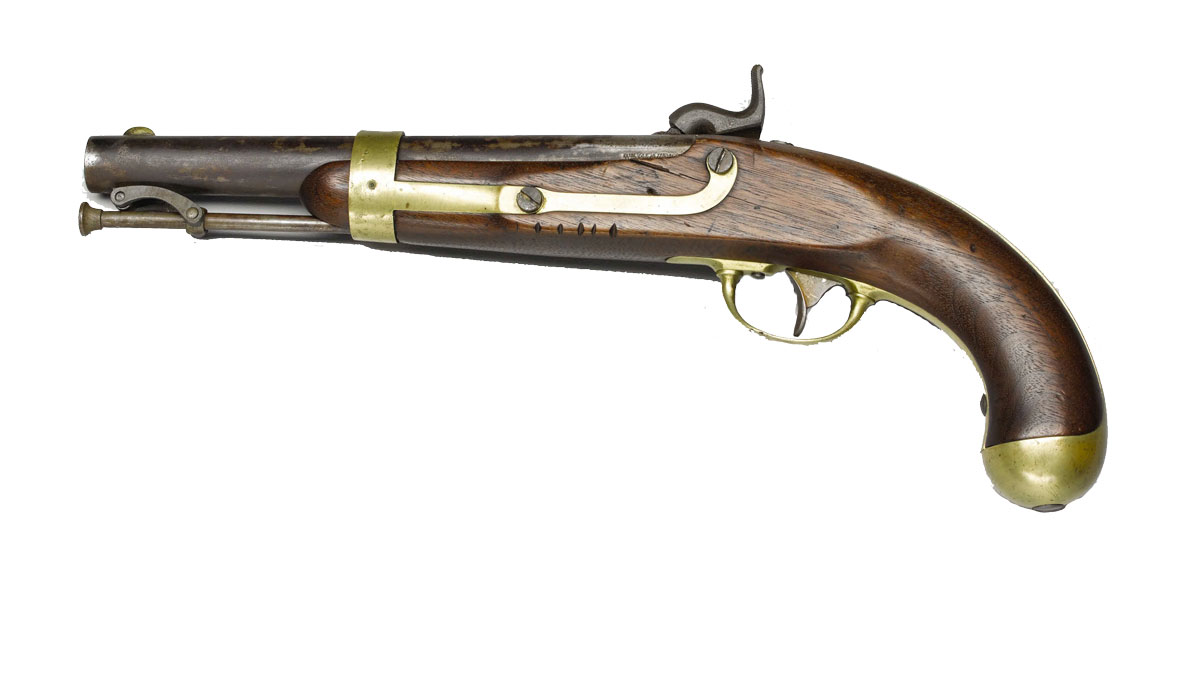 Heritage Auctions
Heritage Auctions
Palmetto Model 1842 Percussion Pistol
Caliber: .54
Operation: Muzzleloader, single-shot
Length: 14 inches
Weight: 2 lb 12 oz
The Palmetto Armory in Columbia, South Carolina, manufactured 2,000 U.S. Model 1842 percussion pistols in the early 1850s for use by the state’s militia; they became among the first pistols issued to Confederate troops. This Palmetto Model 1842 was carried by William Henry Wallace, a South Carolinian who entered the Civil War a private and left it a brigadier general.
Lefaucheux Model 1853 Revolver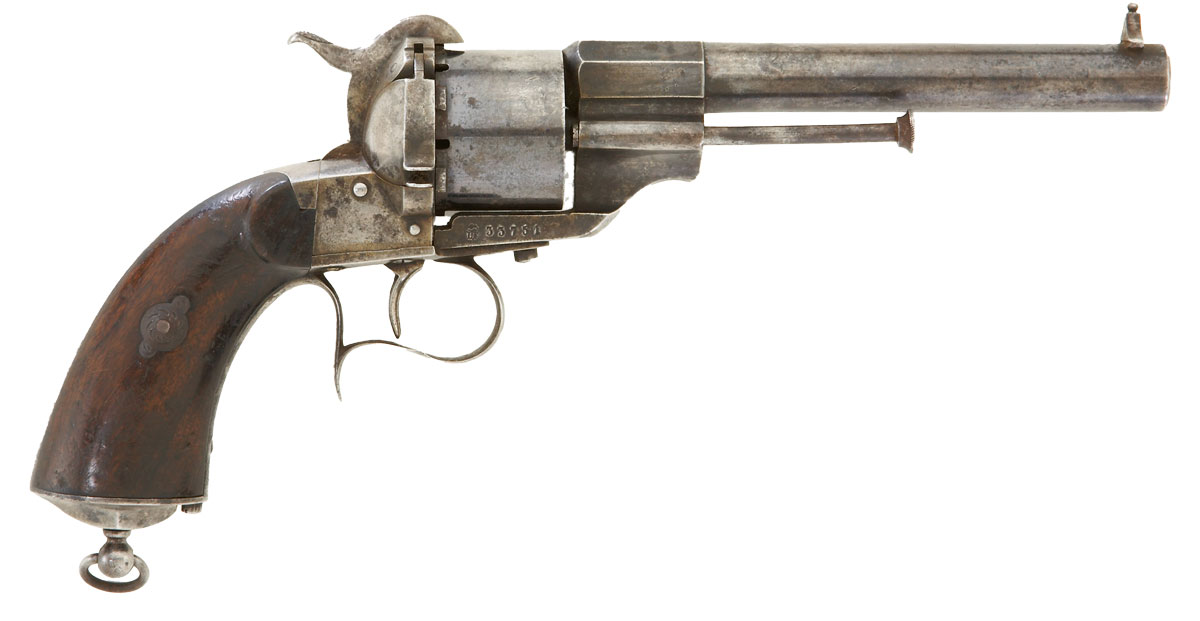
Lefaucheux Model 1853 Revolver
Caliber: 12 mm (approximately .47)
Operation: Single-action, six-shot
Length: 11 1/4 inches
Weight: 2 lb 3 oz
This revolver, produced in Paris, was used by both sides: The U.S. government purchased at least 12,000 for Union troops, and Confederate officials procured between 2,000 and 5,000 for their soldiers. Unlike the cap-and-ball percussion system of contemporary American-made revolvers, the Lefaucheux fired an internally primed metallic (or “pinfire”) cartridge. While technologically advanced, the gun was easily damaged and ammunition was difficult to obtain so it was not a particularly popular weapon with the troops.
LeMat 1st Model Revolver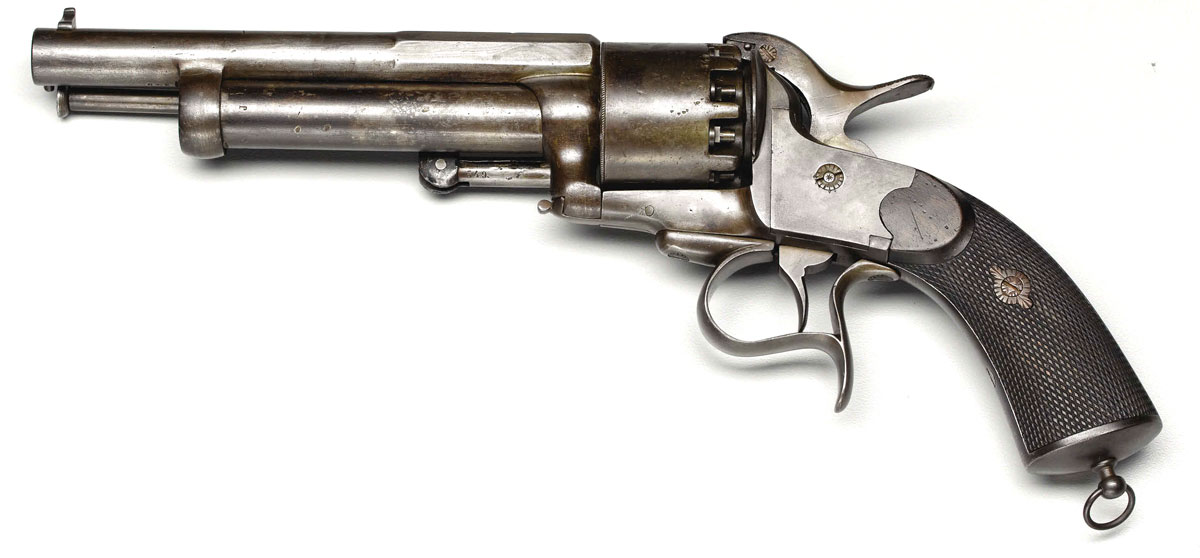
LeMat 1st Model Revolver
Caliber: .42/.63
Operation: Single-action, nine-shot plus additional single shot
Length: 13 5/8 inches
Weight: 4 lb 1.6 oz
Jean Alexandre Francois LeMat, a physician in New Orleans, designed this innovative—and menacing—revolver in 1856 with the help of future Confederate general P.G.T. Beauregard. Beneath the nine-chamber cylinder was a larger smoothbore barrel designed to fire buckshot; the hammer had a pivoting striker that could rotate to fire either the .42-caliber rounds or the lower .63-caliber barrel. Fewer than 3,000 LeMats were produced (in France and England) between 1856 and 1865, many of them purchased by the Confederacy.
Savage 1861 Navy Revolver
Savage 1861 Navy Revolver
Caliber: .36
Operation: Single-action, six-shot
Length: 14 1/4 inches
Weight: 3 lb 6 oz
In 1861 and 1862, the Savage Revolving Fire-Arms Co. of Middletown, Massachusetts, produced 20,000 Savage 1861 Navy revolvers. The revolver had a distinctive heart-shaped trigger/lever guard and a double trigger (a firing trigger and a lower, second trigger that, when pulled, rotated the cylinder and cocked the hammer). The Union army contracted to receive about half of the revolvers; many of those privately sold ended up in Confederate hands.
Sources
Joseph G. Bilby, Civil War Firearms (1996); John D. Billings, Hardtack and Coffee (1888); collegehillarsenal.com; John F. Graf, Standard Catalog of Civil War Firearms (2008); militaryfactory.com; Bell Irvin Wiley, The Life of Johnny Reb (1943).
Related topics: weapons




